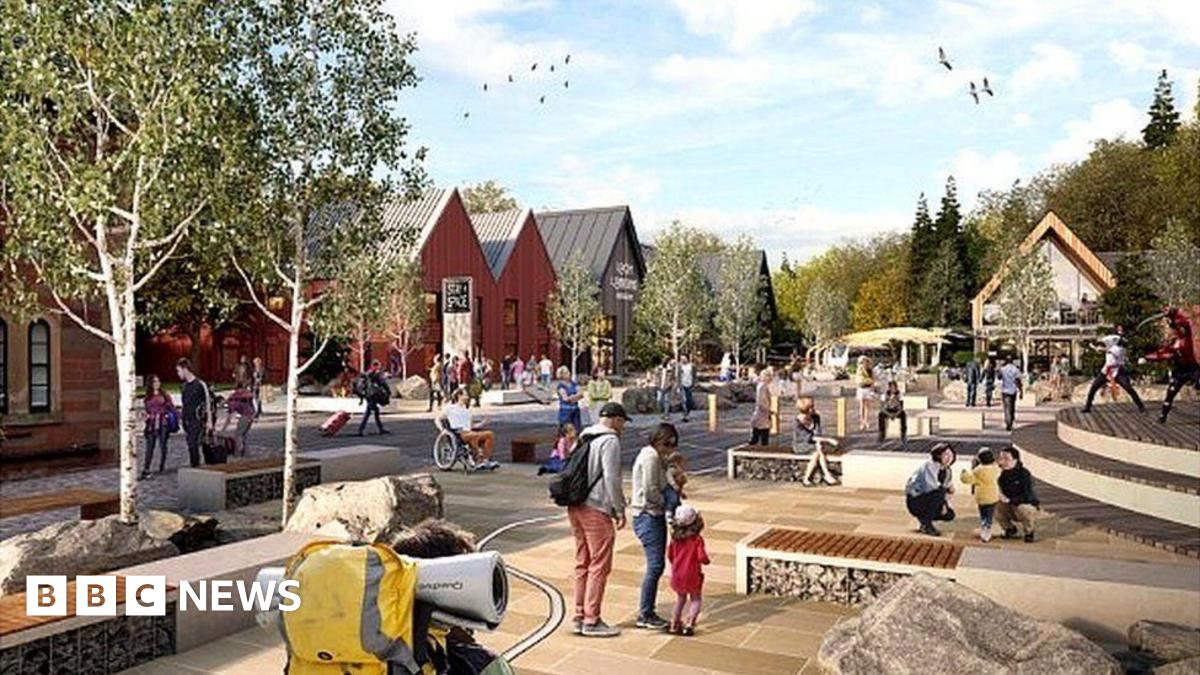Infra
Port infrastructure: regenerating communities and boosting local economies | Project Scotland

Ian Mockett, director, energy and marine, at COWI UK, explains why investing in port infrastructure can regenerate communities and boost local economies
£1.8 billion is set to be invested in port infrastructure if Labour successfully delivers its Green Prosperity Plan. While the reality may be somewhat different and take time to put into motion, it is encouraging to see the political affirmation that port upgrades are necessary for the energy transition. Multiple analysts from the UK Investment Bank and Arup to RenewableUK point to insufficient port capacity that puts the UK’s ability to achieve its net zero goals at risk.
Except for a handful of notable developments such as Green Port Hull, over the past several years, would-be investors have watched and waited, seeking greater confidence in the offshore wind market and its build-out rate before committing to invest in port infrastructure. But that is about to change.
Time to make the leap
Last year, the Scottish Offshore Wind Energy Council issued a call for proposals from ports and top tier supply chain companies to make upgrades to support the delivery of Scotland’s offshore wind pipeline. At the beginning of 2024, 38 projects had successfully completed stage one with a potential capital value of £6.5 billion and three initial projects were progressed to stage two, including port expansion projects at Nigg and Cromarty. In project news, the first of the 20 Scotwind leasing round projects submitted its offshore consent application, while more recently, Green Volt, what will be the world’s largest floating offshore wind farm, received planning consent.
In short, the infrastructure project pipeline – both onshore and offshore is red hot. But the same is true of offshore wind opportunities globally. The UK is increasingly competing with the likes of Asia Pacific, other parts of Europe and the US to grow its offshore wind market.
If UK port infrastructure remains insufficient, developers may simply walk away in search of opportunities further afield. Or if they were to press on, they might have to take fabrication abroad and use neighbouring European ports in countries such as Denmark, Germany and the Netherlands for assembly etc., and for service operation vessels – meaning other economies would benefit from the UK’s offshore wind build out rather than our own.
The regenerative community impact of port infrastructure
If we commit to port infrastructure, we are also committing to enabling a brighter future for many communities. Two in five people live within 5km of the coast in Scotland. But in many rural locations, the population has declined as local economies have shifted away from traditional activities including fishing, agriculture and mining, to a seasonal tourism-based service economy.
Scotland’s 2022 Census revealed that almost half of council wards in the Scottish Highlands had experienced a decline in their populations over the past 10 years with some areas. Some regions are particularly at risk, for example the population of Caithness – home to Wick and Scrabster ports – is expected to fall by 18 per cent by 2040. With few stable, well-paid jobs, younger generations are leaving the homes they grew up in to search for better employment and education opportunities further afield.
While offshore wind will have a regenerative impact, it is unlikely to be felt fully for several years. Whereas new port infrastructure would create jobs and boost economic growth much sooner, allowing coastal communities to flourish once more while meeting the industry’s requirements across manufacturing, assembly, staging, operation and maintenance and decommissioning. And it could also pave the way for future opportunities, for example green hydrogen and sustainable aviation fuel.
The recent launch of the Scottish Offshore Wind Ports Alliance – a 13-port strong alliance which is developing opportunities to enhance regional competitiveness, drive efficiencies and fast-track the required expertise to support the UK’s burgeoning offshore wind industry – is an encouraging first step, but the size of the opportunity warrants even greater attention.
A strategy for the many
A holistic strategy coordinated at a high level would ensure that the needs of offshore industries are met while creating vital opportunities for local economies to level up on jobs and skills. Crucially though, that strategy would ensure that each region could focus on developing opportunities and infrastructure that would be most appropriate to them.
The same strategy should also consider how to maximise port infrastructure to complement existing activities while also attracting new industries to the area, as well as ways to strengthen links to ports in places like Ireland and along the North Sea seaboard. This has been the strategy of many European ports, to sympathetically expand its facilities that create synergies with existing port users. For example, the Port of Hanstholm, one of Denmark’s leading fishing ports, is planning to become Europe’s first CO2-neutral fishing harbour, exploring opportunities such as power-to-X and the handling and storing CO2 both of which would work in synergy with the port’s fishing activities and local service companies.
Levelling up port infrastructure in many locations, with strategic sites such as the Port of Cromarty leading the way, will also create more choice and flexibility for developers with several port facilities able to serve overlapping offshore wind development areas. Taking this approach would also ease port capacity challenges earlier as less boxes would need to be ticked per site in terms of the land and sea characteristics allowing more sites to be progressed earlier (e.g., availability, transport links, depth and docking/sea conditions).
Beyond developing the port infrastructure itself, community infrastructure will also be a key consideration for this next ‘industrial revolution’. A boost in jobs will attract an influx of workers to the area who will require homes and all the facilities that make somewhere a great place to live – from doctors, dentists and schools, to entertainment, transport and digital connectivity.
Ensuring community engagement, as well as sympathetic design and construction that fits in with the landscape and its history will uplift the community while boosting employee retention.
An opportunity not to be missed
Standing at the crossroads of another industrial revolution, this is a pivotal time in the history of port infrastructure. With a burgeoning pipeline of offshore projects that shows no signs of slowing down, as a country we will soon be in a great hurry to secure sufficient port capacity to keep the economic benefits of the build out within the UK. A holistic strategy, born out of collaboration at every level – from local to international, can ensure the economic benefit is spread evenly, boosting skills, jobs, and the local economy to uplift and regenerate communities across Scotland. Now is the time for policy makers to put that plan in motion, let’s not wait a minute longer to begin realising the benefits of Scottish port infrastructure investment.










